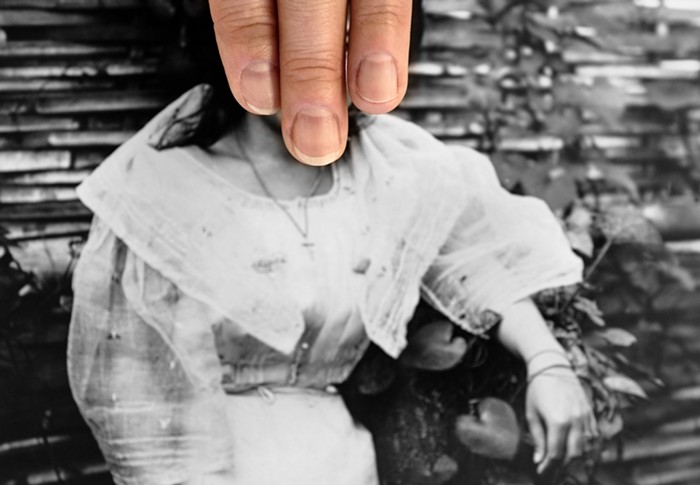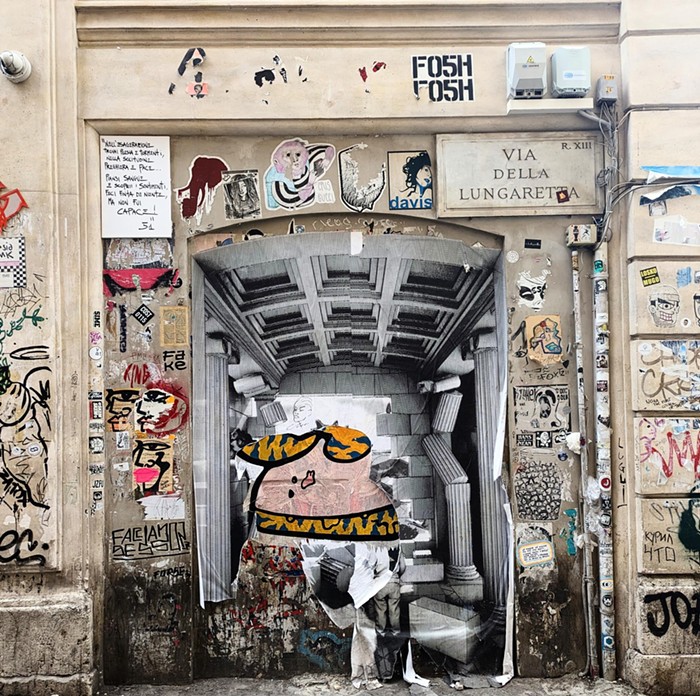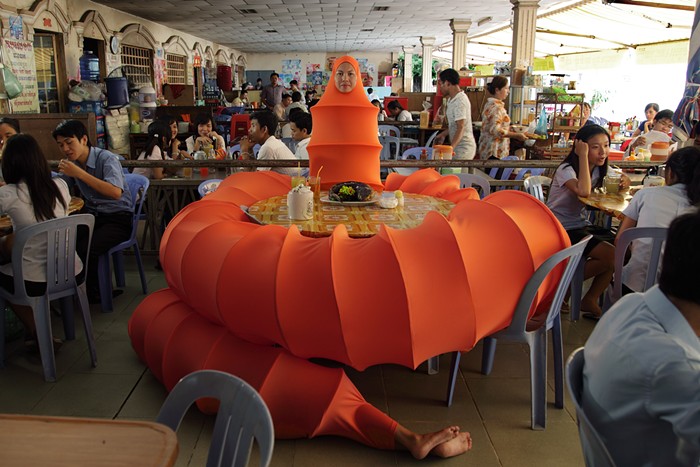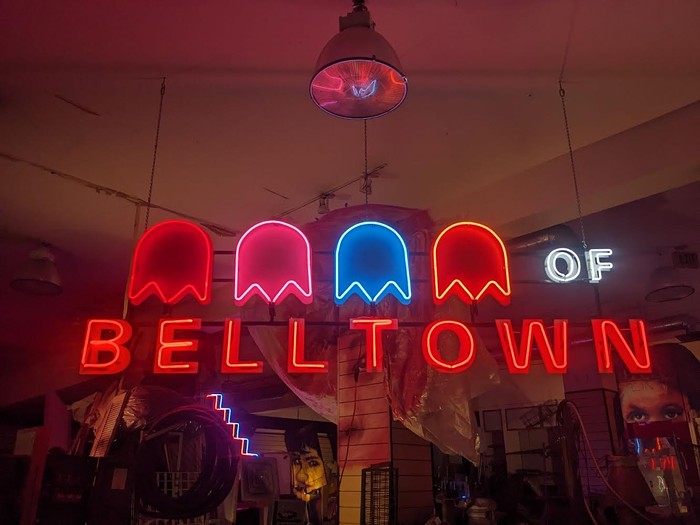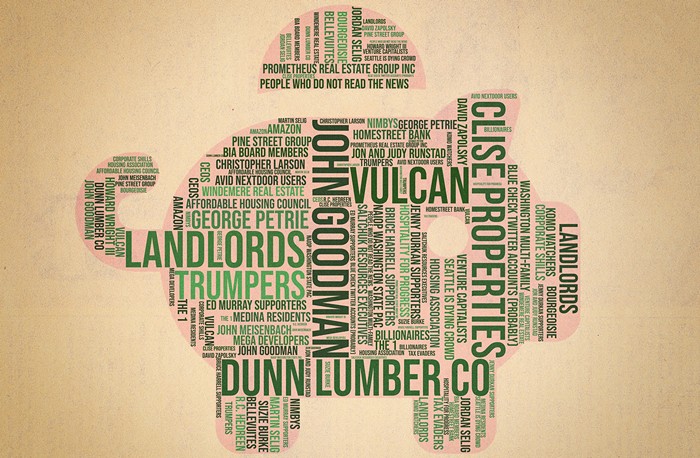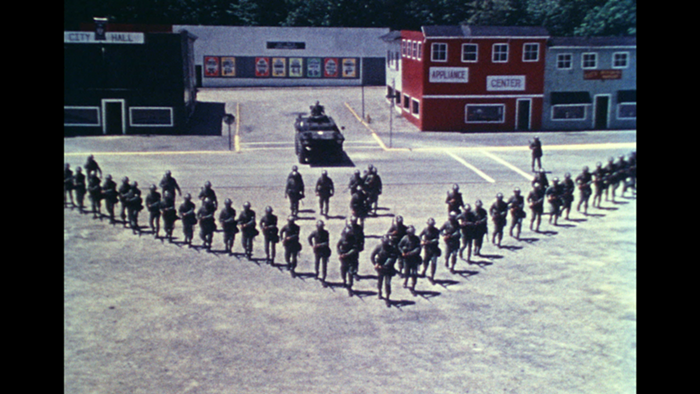
- NEPO House
- The first major work of art I've seen in response to the Japanese tsunami is by Seattle artist Rumi Koshino. It's at NEPO House through July 3.
A video pictures the artist on a beach facing the Pacific Ocean. It plays on a monitor set on the floor, on top of a great wave of dark, mottled linoleum. The artist isn't moving except for her hair whipping hard over her face. The wave of linoleum—just a large raw strip you might buy at a home-improvement store—begins on the far side of the room. It rises over a low wooden armature (with fluorescent tube lights underneath), sinks back to the floor, then climbs as if with terrifying renewed strength all the way up a wall until it reaches the ceiling.
The artist's body stands, unmoving on the screen, between these two crests. One crest is small, the other seemingly limitless. The small crest is beautiful, as if someone had spoken to it before it froze. Little triangular cuts meant to evoke whitecaps have been carved into its surface. They jut out like fingers and teeth (reminiscent of the famous great waves of classic Japanese woodblock prints). The fluorescents shine through the cutouts, turning them into playful shadow puppets.
But the wall of linoleum that rises behind the monitor—that rises at the artist's back—is ominously solid. Its mottle is as ugly as a gloomy drip-painting pattern mass-manufactured for oceans of kitchen floors.
The artist is pinned between receding events—or is she their source? She chants her wishes either way.

